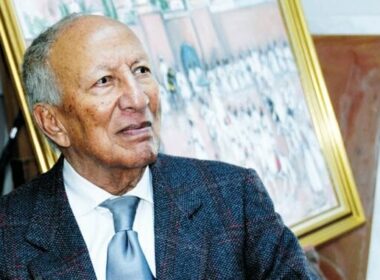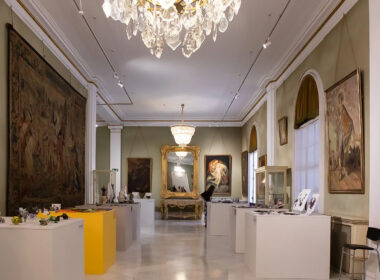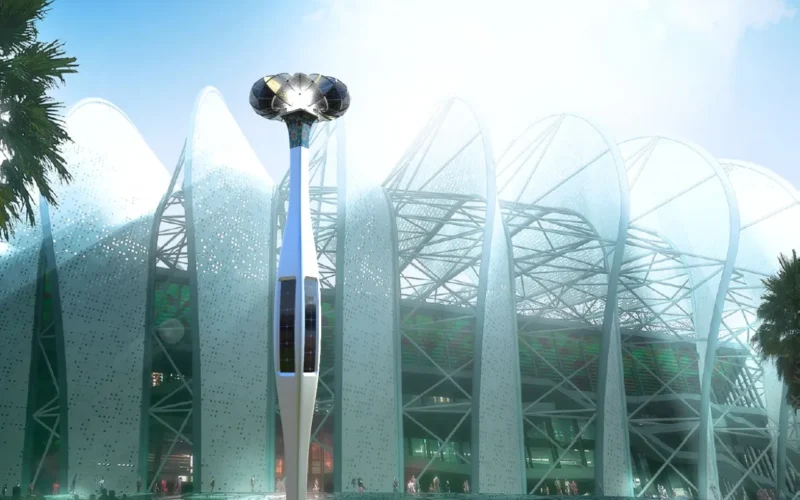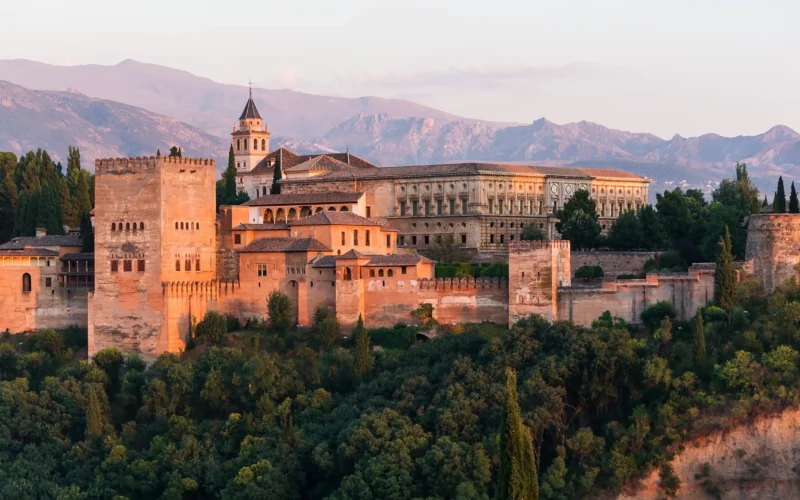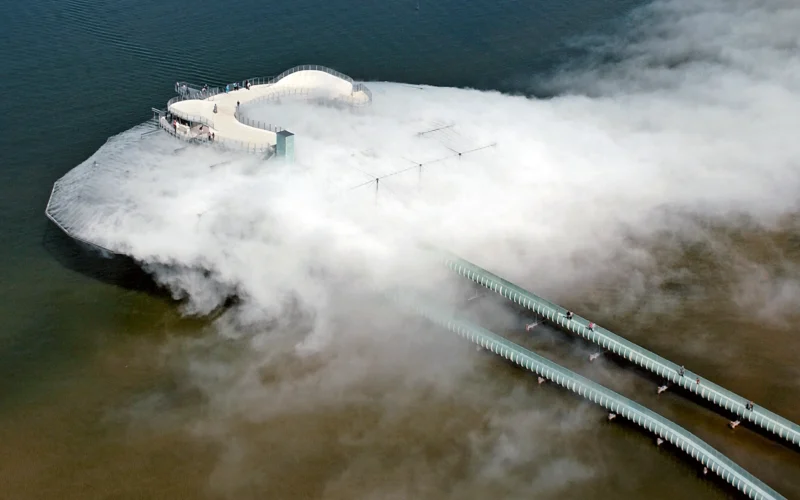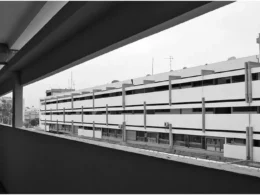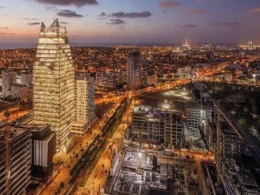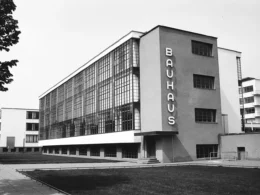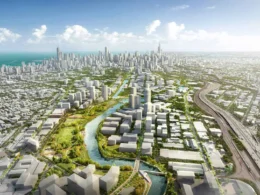At YAZ Magazine, we explore how design in Morocco and across Africa can both honour heritage and lead innovation. In this spirit, we’re proud to share this reflection by Mahdi Naïm, a visionary designer whose work embodies a future-forward yet culturally grounded approach to public space.
Table of Contents
At the crossroads of tradition and innovation
Public lighting in Africa can no longer afford to merely replicate Western models. Our continent, with its cultural richness and exceptional biodiversity, deserves a specific approach that honours both its heritage and natural environment. This realisation guides my vision for lighting design in Africa, a vision I will share during the roundtable on June 18, organised by MN TV.
In Africa, light is not merely an urban convenience; it is deeply rooted in our relationship with the world, in our social rituals, and in our way of inhabiting space. Unlike Western societies, where public lighting primarily serves functionality and safety, Africa maintains a more nuanced, more spiritual connection with light.
Rethinking public lighting to respect natural rhythms
One of the major challenges of our time is light pollution. In Africa, where biodiversity is particularly rich and vulnerable, this issue becomes critical. Nocturnal insects, migratory birds, and many other species are disrupted by poorly designed and overly intense public lighting.
We must therefore design lighting solutions that respect the circadian rhythms of life. Lights with variable intensity based on the time of day, directional lighting that minimises light spill into the sky, and colour temperatures adapted to local ecosystems, these principles can transform the ecological impact of our cities.
The LumCity lamppost: When design celebrates our heritage
This is the philosophy behind the LumCity project, developed in collaboration with Fenie Brossette. More than just a lighting device, LumCity embodies a philosophy: a design inspired by our natural and cultural heritage.
The palm tree, a symbol of life and resilience in Morocco, inspired the form of this urban lamppost. This reference is no coincidence: it embeds the technical object within a cultural narrative, giving it soul and a distinctly African identity. Technology thus serves cultural identity, creating urban spaces that tell our story.
The regional customisation of these lampposts allows us to go even further in celebrating heritage. Each city, each region, can adapt the motifs, colours, and finishes to reflect its own identity. Public lighting then becomes a vector of cultural pride, a territorial marker that enriches the urban experience.
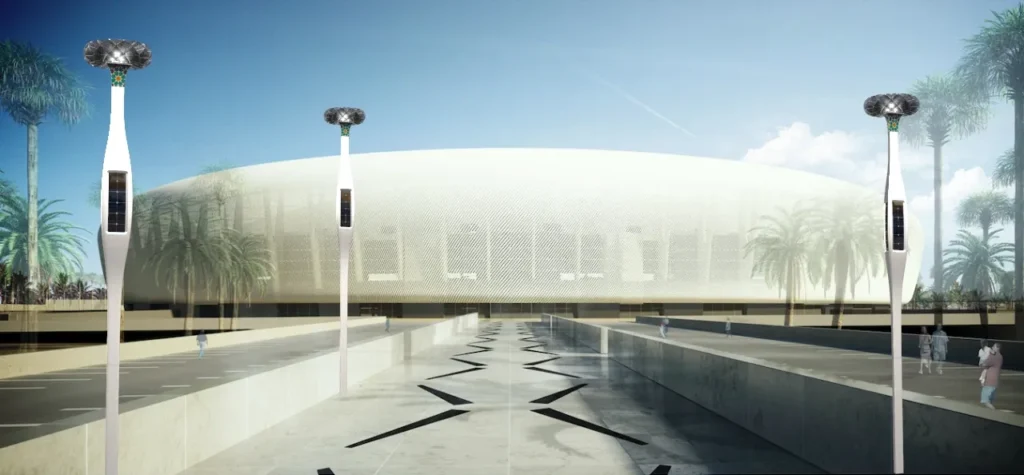
Innovation in the service of sustainability
The LumCity project also illustrates how technological innovation can serve sustainability. Digital manufacturing, which eliminates the need for costly moulds, not only reduces production costs but also lowers the carbon footprint of the process. The use of deep drawing to shape recycled aluminium further optimises material usage.
This approach to responsible design is essential for Africa. In the face of climate change, our continent cannot afford to repeat the mistakes of Western development models. We must invent our own path, one that reconciles modernity with respect for the environment.

Toward a humanistic luminous urbanism
Public lighting in Africa must, above all, serve communities. Beyond its basic function of illuminating, it must contribute to the creation of vibrant, inclusive, and safe public spaces. Light shapes our perception of urban space and influences our social behaviours. Thoughtful lighting design must consider these human and social dimensions.
Well-lit spaces foster encounters, nighttime activities, and the appropriation of public spaces by citizens. In societies where community life is central, as in many African cultures, this aspect is especially important. Our approach to lighting design must therefore incorporate sociological and anthropological considerations.
Conclusion: Lighting Africa’s Future
To “illuminate Africa,” as I like to say, is not just about installing street lamps. We must fundamentally rethink our relationship with light, with public space, and with our environment. Lighting design represents a tremendous opportunity to assert an African vision of modernity — one that honours our cultural heritage while embracing innovation.
This is the vision I advocate for daily through my projects, such as LumCity, and that I will continue to promote during the June 18 roundtable. Africa deserves public lighting that reflects who we are: warm, vibrant, respectful of life, and deeply rooted in our cultural values.
Mahdi Naïm is a multidisciplinary designer and innovation catalyst based between Casablanca and Lyon. Winner of the Design Leader of the Year Award 2020 and the Industry Meeting Awards 2024, he leads projects in design, prototyping, and mass production. Socially engaged, he contributes to the Al Mountada think tank for the development of Morocco and serves on the scientific council of the EDVANTIS Group.




